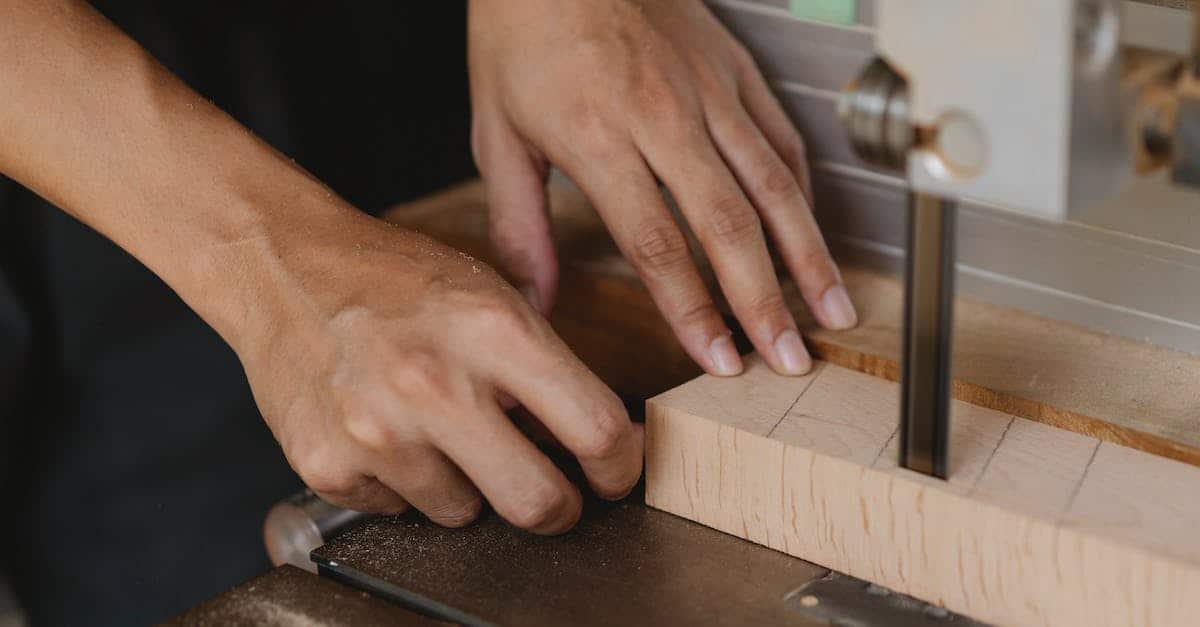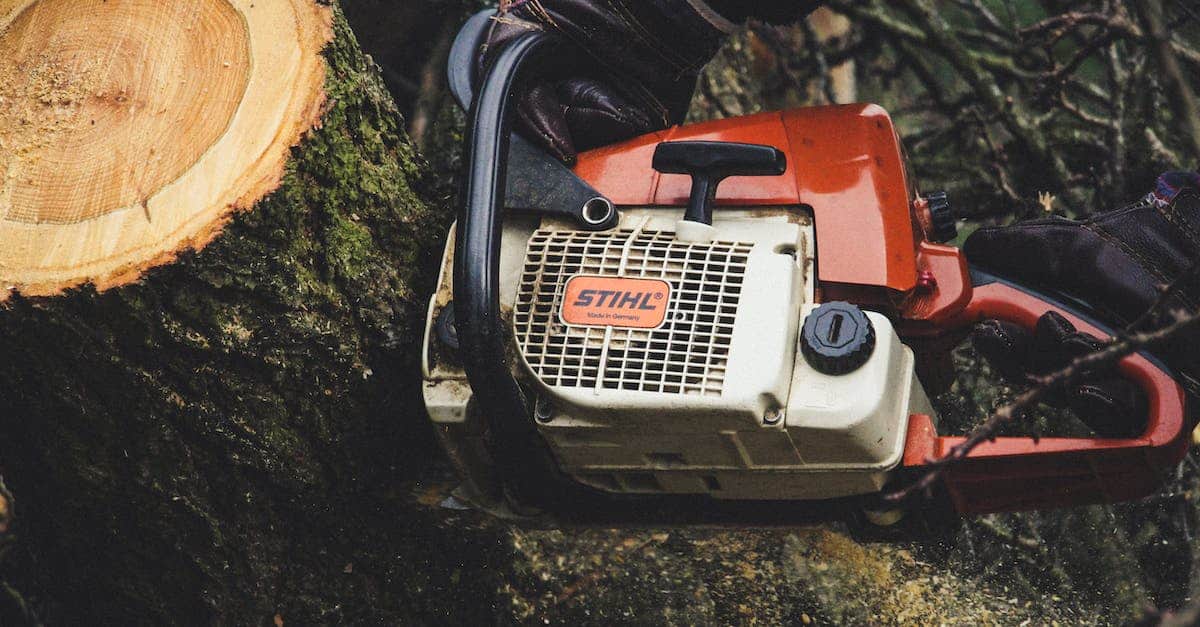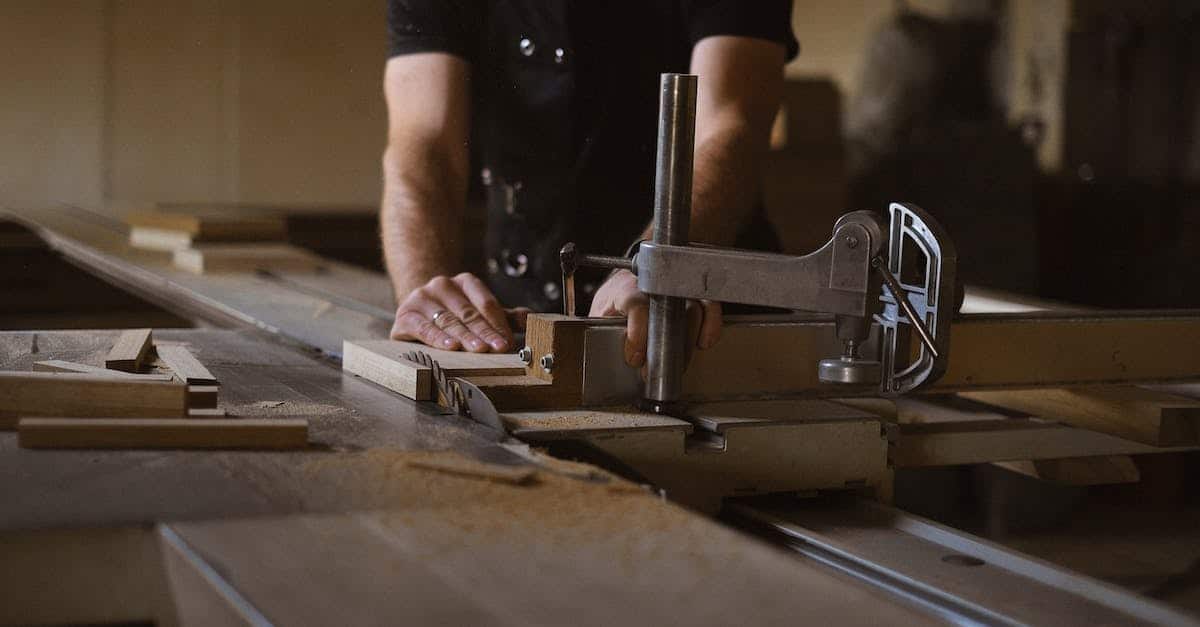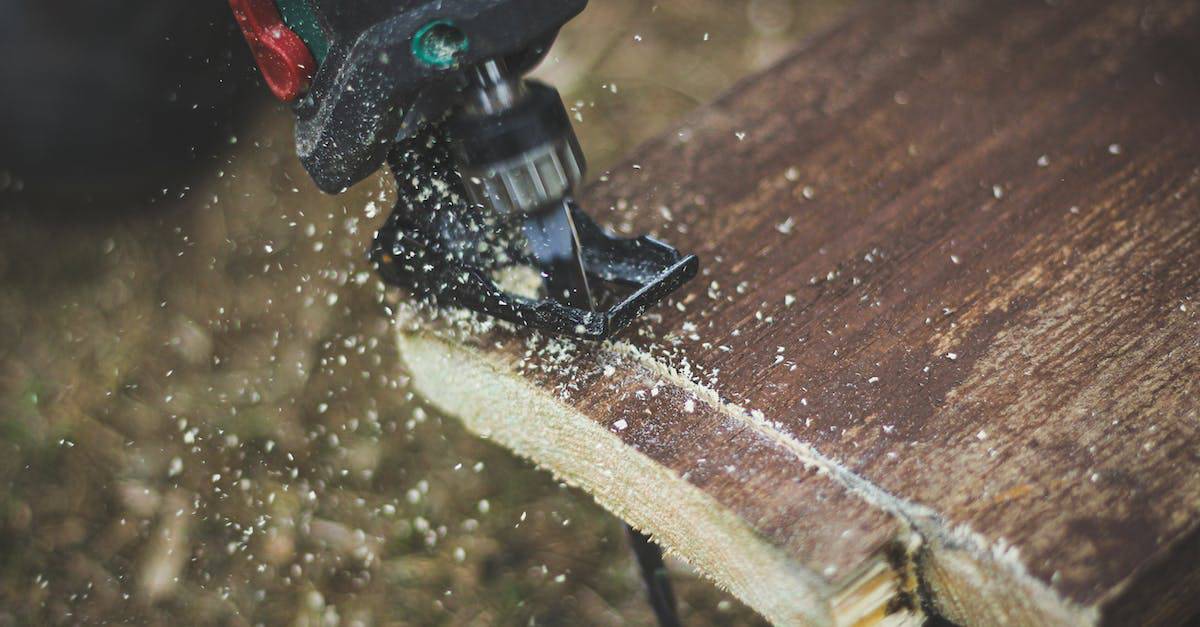Ever wondered how woodworkers and metalworkers make those precise cuts that seem almost impossible with regular saws? That’s where the band saw comes in, a powerhouse tool that’s as versatile as it is efficient. Whether you’re looking to tackle intricate curves or rip through lumber, this tool’s got your back.
In this article, you’ll dive deep into the world of band saws. You’ll learn what they are, how they work, and why they’re a must-have in any serious workshop. So, roll up your sleeves and let’s get ready to explore every nook and cranny of this cutting-edge tool that might just become your new workshop favorite.
What Is a Band Saw
Picture yourself walking into your woodworking haven, the smell of sawdust and lumber filling the air. Here, in the heart of your creative domain, stands one of the most essential tools you’ll ever use: the band saw. But what’s a band saw exactly, and why should it have a place of honor in your workshop? Let’s dive in.

A band saw consists of a long, sharp blade stretched between two or more wheels. As the wheels turn, so does the blade, slicing through wood with precision and ease. It’s not just any cutting tool; it’s your ticket to intricate curves and uniform cuts, whether you’re crafting delicate trim or shaping sturdy chair legs. Here’s what makes it a must-have:
- Versatility: Whether you’re sawing through thick lumber or making delicate cuts, the band saw’s adjustable blade guides and speed settings cater to a wide variety of materials and thicknesses.
- Precision: The uniform blade movement provides extraordinary control, making it simple to follow even the most complex patterns.
- Efficiency: With the band saw, you can cut several pieces at once by stacking them, saving time and ensuring consistent results.
And it doesn’t stop there; resawing, which is splitting wood thickness-wise, is another task where the band saw shines. This capability allows you to create thinner slabs from thicker pieces, perfect for veneers or book-matched panels that can transform the look of your projects.
Remember, while the band saw is incredibly versatile, the type of blade selected is critical. Blade width and tooth count influence the accuracy and types of cuts you can make. For intricate curves, a narrow blade with more teeth per inch (TPI) is ideal, while wider blades with fewer TPI are better for straight cuts and resawing.
Remember safety first—you’ll want to wear eye protection and follow best practices to keep all of your woodworking adventures injury-free. With the right techniques and a bit of practice, you’ll soon wonder how you ever managed without this powerhouse.
How Does a Band Saw Work
As you spend more time with your band saw, you’ll appreciate the simplicity behind its robust performance. The core of a band saw’s operation is its blade—a continuous band of toothed metal stretched between two or more wheels. When you power up the saw, the wheels turn, setting the blade in motion.
The cutting action is straightforward. You feed your wood or chosen material steadily into the moving blade, which slices it with precision. Unlike other saws that might bind or kick back, the band saw’s downward cutting motion and tight blade tension reduce the risk of such mishaps. This makes your cuts not only accurate but also safe and smooth.
Remember the importance of choosing the correct blade for the type of cut you’re making? Well, when it comes to operation, the same rule applies. The width, tooth pattern, and blade thickness will dictate your saw’s ability to cut curves or tackle tough resawing tasks. Here’s a quick breakdown of what you should keep an eye on:
- Blade Width: For straight cuts, go broad. Tight curves call for a narrower blade.
- Tooth Pattern: More teeth per inch are great for fine, smooth cuts; fewer teeth are better for faster, rougher cuts.
- Blade Thickness: Thicker blades resist breaking and are excellent for straight cuts, while thinner blades are your best bet for curves.
Your band saw is capable of many feats, from detailed scroll work to lumber sizing. As you master blade selection and feed rate, you’ll find it easy to create uniform cuts or match intricate shapes. The machine’s design with its adjustable blade guides and variable speed settings add to the level of control you maintain over the workpiece at all times.
In your woodworking journey, your band saw will prove to be an indispensable tool. It’s the quiet powerhouse capable of both finesse and brute force. Its versatility shines when you’re converting logs into lumber or creating complex joinery. Keep your blades sharp, your guides adjusted, and your focus on safety, and there’s no limit to what you can achieve.
Types of Band Saws
As you continue to delve into the world of woodworking, you’ll soon realize the diversity of band saws available. Each type is tailored for specific projects, from intricate detailing to heavy-duty resawing.
Benchtop Band Saws are your go-to for convenience and portability. Ideal for small workshops, they don’t skimp on performance for most DIY projects. You can slice through thinner pieces of wood and move the saw around as your workspace dictates—just ensure it’s anchored securely to avoid any mishaps.
Moving on, Floor-Standing Band Saws are the beasts of the workshop. They’re designed for serious woodworkers like yourself, who need the power and capacity for larger projects. With a sturdier base and typically more powerful motor, these saws can handle larger stock and more demanding cuts with ease. If you’re regularly tackling thick hardwoods or re-sawing lumber, this could be your workhorse.
If precision is your game, the Metal-Cutting Band Saws might spark your interest, despite the name. They come with fine-toothed blades optimal for metal but work wonders on wood when clean cuts are essential. Remember, slow and steady wins the race with these saws.
For those of you looking to convert logs into lumber, Horizontal Band Saws lie in wait. Their primary function is to cut logs lengthwise, also known as “resawing”. This type demands space but rewards you with lumber ready for your next masterpiece.
Lastly, don’t overlook the Specialized Band Saws. These niche machines cater to specific needs, such as cutting meat for butchering or intricate curves for artistic designs. While they might not be a staple in every woodshop, they highlight the versatility the band saw family offers.
Whichever band saw type catches your eye, match it to your planned projects and workspace. They’re all capable allies in your woodworking adventures, ready to transform your raw materials into creations that reflect your skill and creativity. Just remember to opt for the machine that aligns with your daily demands and long-term goals.
Applications of Band Saws
When you dive into woodworking, you’ll quickly realize the versatility of band saws—they’re like the Swiss Army knife of the shop. Yours might be sitting in the corner of your garage shop one minute and become the center of your next big project the next.
Precision Cutting for Intricate Projects
Let’s talk intricate cuts. You’re looking at curves and shapes that take your work from basic to awe-inspiring. With a band saw, you’re not just making cuts; you’re sculpting wood. Marquetry, intarsia, and fine detailing—you name it, and a band saw can handle it with ease. The narrow blades are perfect for dovetails and tenons, essentially any joint that needs a clean, precise cut.
Re-Sawing and Size Reduction
Re-sawing lumber is where your band saw flexes its muscle. Need to slice a thick board into thinner slabs? That’s a piece of cake. Re-sawing helps you get the most out of expensive or exotic woods. It’s economical and maximizes your material. Plus, breaking down larger pieces into more manageable sizes makes for easier handling and saves you time and sweat.
Ripping and Crosscutting
Ripping lumber? Crosscutting beams? You’ve got it covered. A band saw can rip lumber with minimal waste, and crosscutting on a band saw can be a safer alternative compared to using a table saw, especially for smaller pieces. You’re avoiding the risk of kickback and ensuring a safer workspace.
Metal and Meat Cutting
Did we mention metal? Oh yes, with the right blade, your band saw turns into a metal-cutting powerhouse. And if you dabble in hunting or processing meat, a specialized band saw designed for this purpose can have you prepping like a pro.
No matter what you’re trying to achieve in your garage workshop, the proper band saw doesn’t just complete a task; it opens up a realm of possibilities. Just remember, it’s not about having the fanciest tools; it’s about mastering the ones you have to create masterpieces that last.
Why Every Workshop Needs a Band Saw
Imagine walking into your workshop, the scent of fresh wood chip lingering in the air, your creativity ready to unfold. The one tool that’s a must-have for this journey is the band saw. Versatile and powerful, a band saw becomes your ally in transforming rough lumber into unique pieces.
Precision is key in woodworking and band saws deliver with unmatched accuracy. Whether you’re crafting intricate details or slicing through thick wood blocks, the band saw maintains that precise edge with ease, enabling you to focus on the artistry of your work. The thin kerf of band saw blades also means less waste, so you get more out of every precious piece of timber.
When you tackle the art of resawing, the band saw is your best bet. It’s the heart of the operation, enabling you to cut wood into thinner slabs while preserving the grain pattern. This not only opens up more possibilities for your projects but also saves you money by maximizing your material use. Think of the exquisite veneers you could create or the way you could book-match panels for a table top. The band saw makes it all possible.
Let’s not forget the convenience it adds to ripping lumber and crosscutting. You might have used other saws for these tasks, but once you experience the band saw’s capacity and smoothness, you’ll wonder how you ever managed without it.
For those of you who dabble in metalworking or even need to cut meat in a pinch, the band saw steps up to the plate. Equip it with the right blade, and it shifts gears from wood to metal or meat without breaking a sweat.
Adding a band saw to your arsenal equips you to tackle a broader range of projects with confidence and finesse. It’s the tool that will keep up with your growing crafting aspirations and help you turn a simple block of wood into a masterpiece that resonates with your passion for woodworking.
Conclusion
So there you have it! Your workshop’s potential is just waiting to be unlocked with the addition of a band saw. Whether it’s creating intricate designs with precision cuts, resizing lumber with ease, or diving into metal and meat cutting projects, the right band saw will become your go-to tool. Embrace the versatility and let your creativity flourish as you tackle new and exciting projects. Remember, with a band saw in your arsenal, you’re not just cutting materials—you’re crafting possibilities.
Frequently Asked Questions
What is the main use of a band saw in a workshop?
Band saws are primarily used for precision cutting which allows for creating intricate shapes and designs in woodworking projects.
Can band saws be used for tasks other than cutting wood?
Yes, beyond wood cutting, band saws can also be utilized for re-sawing wood slabs, ripping lumber, crosscutting, and even cutting metal and meat with the appropriate blades.
Why is precision important in woodworking?
Precision is crucial in woodworking because it ensures that pieces fit together correctly, which is essential for the structural integrity and aesthetic quality of the final product.
What does re-sawing wood mean?
Re-sawing is the process of slicing wood into thinner slabs, often to create veneers or to make use of thicker pieces of lumber.
Are band saws suitable for both small and large workshops?
Yes, band saws come in various sizes and capacities, making them suitable for both small garage workshops and larger professional settings.
How does a band saw enhance a woodworker’s capabilities?
A band saw significantly broadens a woodworker’s ability to handle complex projects by offering precise cuts, versatile re-sawing options, and the convenience of ripping and crosscutting all within one tool.
Is a band saw necessary for metal and meat cutting?
For specialized applications like metal and meat cutting, a band saw provides precise and clean cuts, but it is necessary to use the correct type of blade designed for each specific material.
















